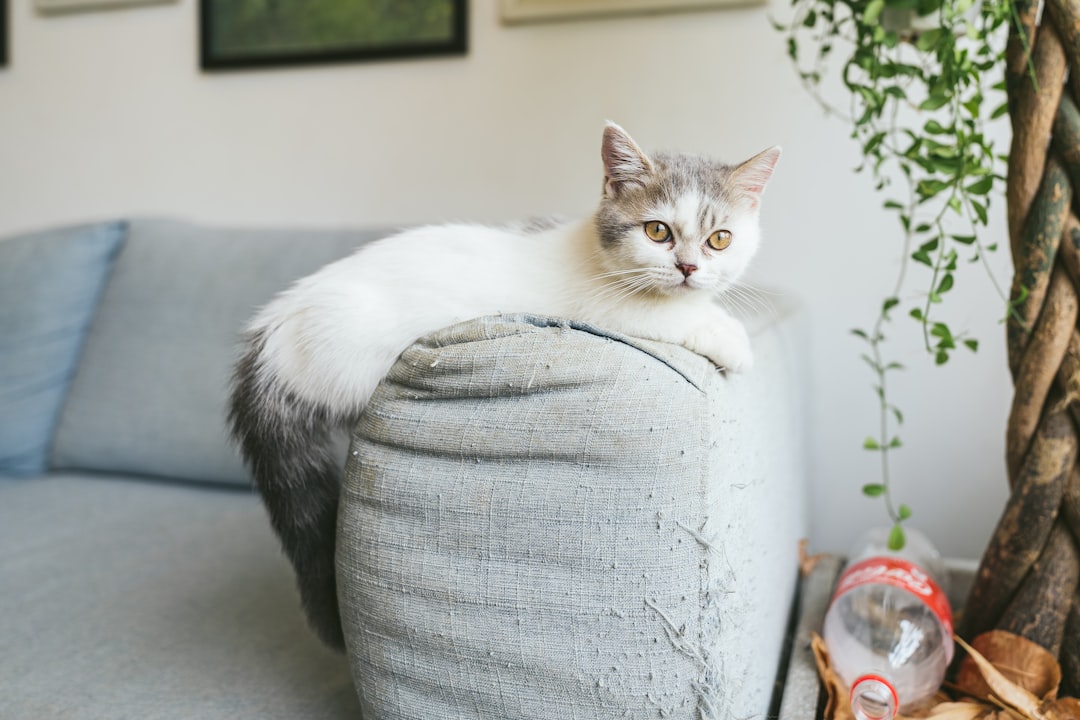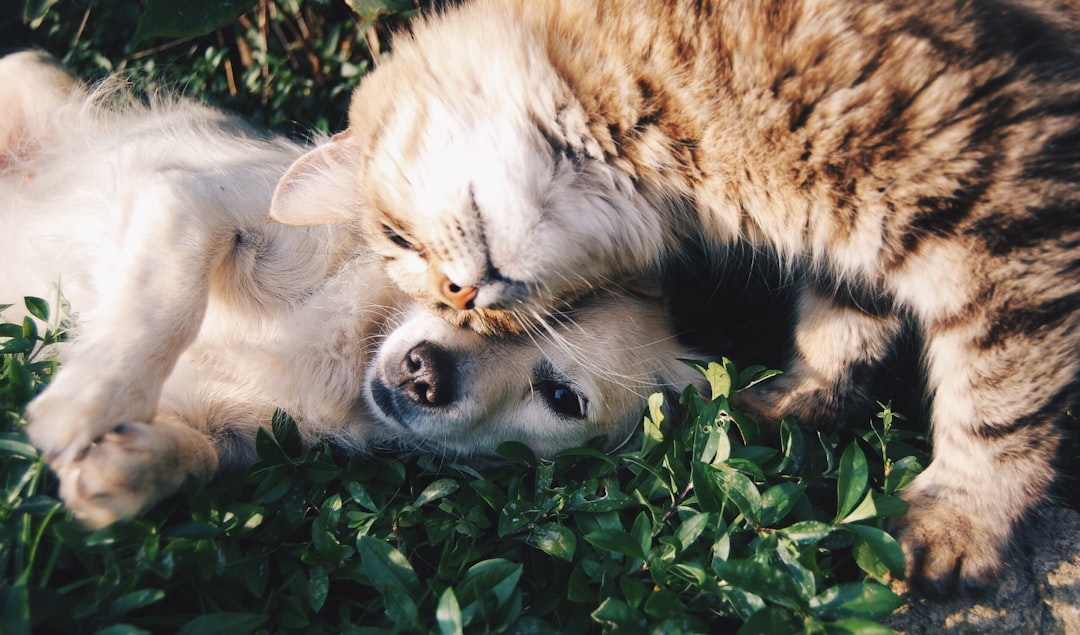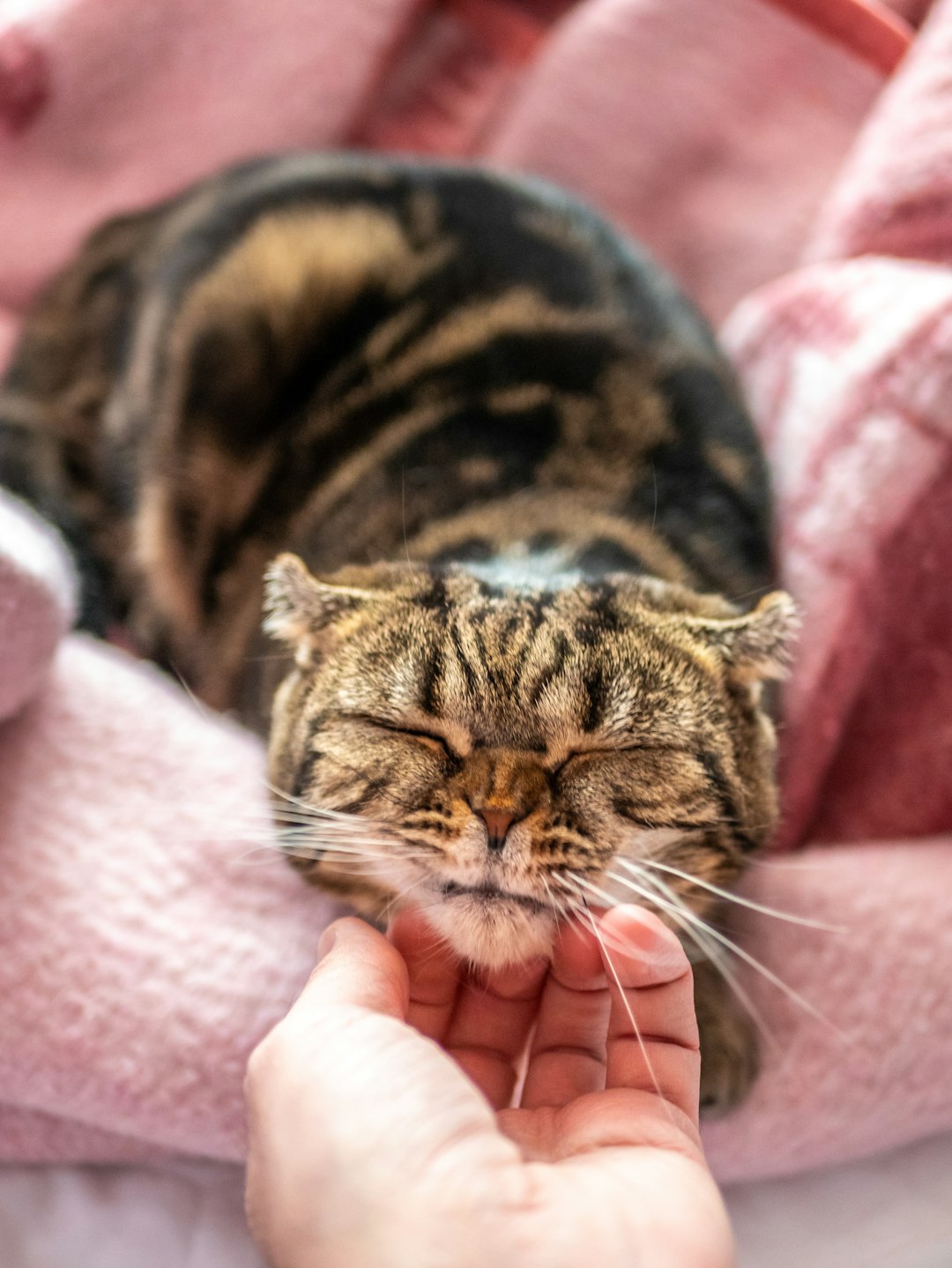When it comes to our beloved feline friends, their curiosity knows no bounds. Cats love to explore, climb, and get into everything, which can pose potential risks in your home. Therefore, it’s crucial to take proactive steps to ensure their safety. In this guide, you’ll discover essential tips for cat-proofing your home, from understanding your cat’s quirky behaviors to identifying and mitigating potential hazards. We’ll also explore ways to create safe spaces, secure your furniture, protect your technology, and keep windows and balconies safe. By following these practical strategies, you can transform your home into a secure haven that allows your cat to thrive while giving you peace of mind. Let’s dive into the important measures you can implement today!
Understanding Your Cat’s Behavior
Understanding your cat’s behavior is the cornerstone of Cat-proofing your home effectively. By observing and interpreting their actions, you can mitigate risks and create a safer environment.
Common Cat Behaviors to Watch For
Cats exhibit a range of behaviors that can lead to potential safety hazards. Here’s a table highlighting some common behaviors alongside their implications:
| Behavior | Implication | Safety Concern |
|---|---|---|
| Climbing | Cats love to explore vertical spaces | Risk of falls or knocking down fragile items |
| Scratching | Natural instinct to scratch surfaces | Damage to furniture and potential injury through splinters |
| Chewing | Cats may chew on cords or items | Risk of electrical shock or choking |
| Hiding | Seeking small, enclosed spaces | Getting trapped in unsafe areas |
Why Cats are Curious Creatures
Cats are inherently curious, which can lead them to explore unsafe areas in your home. Their inquisitive nature means they will likely investigate:
- Small openings: Areas such as behind appliances can pose risks.
- New objects: Unfamiliar items can attract their attention.
- Consistently moving objects: Items like dangling cords can entice them to play, leading to potential hazards.
By being proactive and addressing their instincts, you can significantly reduce the likelihood of accidents and ensure a harmonious living space for both you and your feline companion. Understanding these behaviors will empower you to anticipate and manage any potential risks effectively.
Identifying Potential Hazards
When it comes to cat-proofing your home, identifying potential hazards is crucial for ensuring your feline friend’s safety. Cats are naturally curious creatures, often exploring their surroundings through sight, smell, and touch. Consequently, it’s essential to be aware of common dangers that might be lurking around your home.
Toxic Plants and Foods
Certain plants and foods can be toxic and even fatal to cats. Here’s a quick table of common toxic items to avoid:
| Toxic Plants | Toxic Foods |
|---|---|
| Lilies | Onions |
| Aloe Vera | Garlic |
| Philodendron | Chocolate |
| Sago Palm | Grapes |
| Poinsettia | Avocado |
Make it a point to remove these plants from your house and securely store away any potentially harmful foods, especially if you’re offering your cat a taste from your plate.
Household Items That Can Harm Your Cat
Everyday household items can pose serious risks to your cat. Accidental ingestion or exposure can lead to dangerous situations. Here are some common hazards to be mindful of:
- Cleaning Supplies: Many common cleaners contain harmful chemicals that pose a poisoning risk. Opt for non-toxic alternatives.
- Human Medications: Always keep medications out of reach, as cats can easily chew through packaging. Even over-the-counter medications can be fatal.
- Coins & Small Objects: Items like small coins can be choking hazards. Be vigilant about items left on tables and countertops.
By taking proactive steps in cat-proofing your home, you can create a safer environment for your furry companion, allowing them to roam freely without unnecessary risks.
Safe Spaces for Your Cat
Creating a Cat-Friendly Environment
A well-planned environment significantly enhances your cat’s comfort and well-being. Cat-proofing your home starts with providing spaces that cater to their natural instincts. Incorporating vertical spaces such as shelves or cat trees can satisfy their climbing urges. Soft bedding, warm blankets, and cozy nooks in quiet areas of the house can also foster a sense of security. Additionally, consider the use of safe plants like catnip or cat grass to stimulate their curiosity without putting their health at risk.
| Environment Element | Purpose | Examples |
|---|---|---|
| Vertical Spaces | Climbing & exploring | Shelves, cat trees |
| Hiding Spots | Security & comfort | Boxes, fabric tunnels |
| Safe Plants | Stimulation & safety | Catnip, cat grass |
Designating Safe Zones
It’s crucial to have specific areas designated as safe zones for your feline friend. This helps them retreat when feeling stressed or overwhelmed. These zones should be free from loud noises, heavy foot traffic, and any potential hazards. Create a “cat room” by allocating a space with their litter box, food and water bowls, and toys. Utilizing baby gates can demarcate safe zones effectively, allowing your cat to feel secure while reducing access to hazardous areas. Remember, a well-defined safe space not only protects your cat but also sets clear boundaries.
| Safe Zone Aspect | Benefits |
|---|---|
| Controlled Environment | Reduces stress & anxiety |
| Essential Supplies | Promotes health & comfort |
| Accessible Retreats | Provides a refuge |
By thoughtfully designing these safe spaces, you ensure your cat can explore and relax without unnecessary risks, creating a harmonious living environment for both you and your feline companion.
Securing Furniture and Fixtures
When it comes to cat-proofing your home, securing furniture and fixtures is essential to creating a safe environment for your feline friend. Cats are naturally curious animals, and their playful antics can sometimes lead to accidents. Here are some important aspects to consider:
Cat-Proofing Shelves and Cabinets
Cats love to explore, and shelves and cabinets can pose a risk of injury if not properly secured. Here are some effective strategies to consider:
| Strategy | Description |
|---|---|
| Use Anti-Tip Straps | These can be attached to bookshelves and dressers, keeping them anchored to the wall. |
| Close Cabinet Doors | Use childproof locks or latches to prevent your cat from accessing hazardous items like cleaning supplies. |
| Place Heavy Items Low | Storing heavier items on lower shelves reduces the risk of tipped furniture when cats jump on them. |
Preventing Tipping Hazards
Cats may inadvertently disturb objects on the table or shelves. To prevent accidents:
| Hazard | Solution |
|---|---|
| Tall Furniture | Opt for lower furniture designs that can withstand a cat’s weight without toppling over. |
| Delicate Decor | Keep fragile items out of reach or secure them with museum putty to prevent them from being knocked over. |
| Open Bookshelves | Consider using a barrier, like decorative bookends, to prevent items from falling off the ends of shelves. |
By implementing these strategies, you can greatly minimize the risks associated with your cat’s playful behavior, ensuring a safer home for both of you.
Protecting Technology and Cords
When it comes to cat-proofing your home, one of the most significant safety concerns is protecting your valuable electronics and their accompanying cords. Cats are naturally curious creatures, often intrigued by dangling wires and cables. To ensure your cat’s safety, consider the following strategies.
Organizing Cables and Wires
An organized space minimizes tangles and reduces the risk of your cat chewing on cords. Here are some effective tips:
| Tip | Description |
|---|---|
| Cable Management Clips | Use clips to secure cables together, keeping them out of reach. |
| Cord Covers | Invest in protective tubing or covers, which can deter chewing. |
| Designated Storage | Store unused electronics and cords in closed cabinets to prevent access. |
Choosing Cat-Safe Electronics
When purchasing new technology, consider opting for cat-friendly electronics. Here are some options to keep in mind:
| Feature | Description |
|---|---|
| Cordless Devices | Choose appliances that require no cords, like wireless chargers. |
| Reinforced Cabling | Look for products with durable, chew-resistant cables. |
| Stable Design | Opt for electronics designed to withstand tipping or knocking over. |
By following these tips for protecting technology and cords, you will create a safer environment for your feline friend while preserving the integrity of your gadgets.
Keeping Windows and Balconies Safe
To ensure your feline friend remains safe while exploring the world outside your home, it’s crucial to engage in cat-proofing your home practices, particularly when it comes to windows and balconies. This section will provide essential tips to safeguard your kitty.
Installing Screens and Barriers
One of the most effective ways to secure windows and balconies is to install sturdy screens or barriers. Consider the following options in the comparison table below:
| Feature | Window Screens | Balcony Barriers | Mesh Netting |
|---|---|---|---|
| Visibility | High | Moderate | Low |
| Ease of Installation | Easy | Moderate | Easy |
| Durability | Varies | High | Moderate |
| Cost | Low | Moderate | Low |
By using window screens or balcony barriers, you can provide fresh air without the risk of falls. Ensure that any installed barriers are securely fastened to prevent your cat from pushing them aside.
Monitoring Outdoor Access
While it’s important to allow your cat to enjoy the outdoors safely, supervision is key. You can employ several strategies:
- Leash Training: Consider training your cat to walk on a leash. This controlled method allows for outdoor exploration without the dangers of falling or running away.
- Catios: A catio, or cat patio, provides a safe, enclosed outdoor environment. Placing one near a window or balcony can give your cat fresh air and sunshine without the risks associated with open spaces.
By combining proper installations and vigilant monitoring, you can greatly enhance your pet’s safety. Cat-proofing your home not only protects your cat but also brings peace of mind to you as a responsible pet owner.
Choosing Cat-Friendly Decor
When embellishing your home, it’s crucial to ensure your decor doesn’t pose a risk to your furry friend. Here are some aspects to consider while cat-proofing your home with decor choices.
Selecting Non-Toxic Materials
Opt for materials that are safe for your cat. Many common household items can be toxic when ingested. Below is a list of cat-friendly materials you should consider using:
| Material | Safety Level | Notes |
|---|---|---|
| Organic Cotton | High | Free from pesticides |
| Bamboo | High | Sustainable and sturdy |
| Natural Wood | High | Avoid treated or painted surfaces |
| Upholstered Fabrics | Medium | Ensure no dangerous chemicals present |
Choosing non-toxic materials not only protects your cat but also contributes to a healthier home environment.
Avoiding Decorative Hazards
While selecting decor, be mindful of items that can pose risks. It’s important to avoid:
- Fragile Items: Cats love to explore. Sturdy decor or items displayed out of reach can help minimize accidents.
- Candles and Open Flames: These can easily be knocked over, leading to potential burns or fires.
- Small Decorations: Tiny trinkets can be choking hazards for cats that are curious and playful.
Incorporating thoughtful design choices can enhance your space while ensuring a safe haven for your feline companion. Adapting cat-proofing your home strategies during your decorating process will establish a comfortable and secure environment for both you and your cat.
Educating Guests and Family Members
Discussing Cat Safety with Visitors
When you invite guests into your home, it’s crucial to share the importance of cat-proofing your home. Begin by highlighting your cat’s personality and behaviors; this sets the stage for open communication. Explain what your feline friend enjoys and what could potentially upset them. For example:
| Point | Explanation |
|---|---|
| Familiarity | Cats can be skittish around strangers. |
| Playtime Warning | Keep toys and play areas clear for safety. |
| Hideaway Spots | Identify quiet areas where your cat can retreat. |
By discussing these points, you’ll help your guests understand your cat’s needs, promoting a friendly and safe environment.
Setting House Rules for Cat Safety
Establishing clear house rules is essential for a harmonious visit. Draft simple guidelines for your guests to follow, such as:
| Rule | Purpose |
|---|---|
| No leaving doors/windows open | Prevents accidental escapes. |
| Cords and small objects away | Avoids potential choking hazards. |
| Gentle interactions | Ensures comfort for both the cat and guests. |
Encourage your visitors to abide by these rules, reinforcing the idea that caring for your cat is a shared responsibility during their stay. Engaging guests in the process of cat-proofing your home fosters a sense of community that ultimately benefits your furry friend!
Regular Safety Assessments
Conducting regular safety assessments is essential for ensuring your cat’s well-being in your home. As a proactive pet owner, consistently evaluating your living space can help eliminate potential dangers and adapt to your cat’s evolving needs.
Creating a Safety Check List
Developing a safety checklist can streamline the process of cat-proofing your home. Here are some crucial areas to focus on:
| Safety Checklist | Action Items |
|---|---|
| Hazard Inspection | Check for toxic plants, chemicals, and sharp objects. |
| Furniture Stability | Ensure tall furniture is securely anchored to prevent tipping. |
| Window and Balcony Security | Install screens or barriers to restrict access to high places. |
| Electrical Cords | Use cord protectors or cover clips to prevent chewing. |
| Potential Escape Routes | Seal gaps under doors and windows to limit wandering. |
Updating Your Home as Your Cat Grows
As your cat matures, their behavior and needs change. Regular assessments should include modifying your environment based on their life stages. For kittens, focus on securing fragile items and removing potential choking hazards. For adult cats, you might want to introduce climbing trees or scratching posts.
| Life Stage | Considerations |
|---|---|
| Kittens | Remove choking hazards and secure plant life. |
| Adults | Introduce new play areas and safe hiding spots. |
| Seniors | Ensure accessibility to food and litter boxes, and provide soft resting areas. |
Implement these strategies regularly to foster a safe and comfortable environment. Engaging in ongoing safety assessments is fundamental to promoting your cat’s health and preventing accidents around your home.
Frequently Asked Questions
What are the best ways to secure breakable items in my home for a cat-proof environment?
To create a cat-proof environment, it’s essential to secure breakable items by placing them in cabinets or high shelves that are out of your cat’s reach. You can also use adhesive putty to secure smaller decorative items to surfaces and prevent them from being knocked over. Additionally, consider investing in display cases with glass doors to safely showcase fragile collectibles while keeping them protected from playful paws.
How can I make my home safe for my cat with plants around?
Many common houseplants are toxic to cats, so it’s crucial to research any plants you have or plan to bring into your home. To ensure your cat’s safety, consider removing any harmful plants and replacing them with cat-safe options, such as spider plants, cat grass, or Boston ferns. If you want to keep existing plants, place them in hanging pots or on high shelves, and monitor your cat’s behavior to prevent any unwanted nibbling.
What should I do to prevent my cat from accessing areas that are dangerous?
To keep your cat from dangerous areas, start by identifying spaces such as basements, laundry rooms, and garages where hazardous materials might be stored. Install baby gates or door guards to block off these areas. Additionally, you can use motion-activated deterrents or furniture arrangements that discourage access. Ensuring that cleaning supplies, tools, and chemicals are securely stored can further enhance your cat’s safety inside your home.
How can I create a safe environment for my cat during the holiday season?
During the holiday season, it’s important to make your home safe for your cat by avoiding decorations that could pose a risk. For instance, opt for non-toxic decorations and ensure ornaments are secured to the tree. Keep any holiday plants, like poinsettias or mistletoe, out of reach as they can be harmful. Lastly, monitor your cat’s access to candles, electrical cords, and tinsel, which can be hazardous if ingested or knocked over.
What are some effective ways to discourage my cat from climbing on furniture?
To discourage your cat from climbing on furniture, provide alternative climbing options such as cat trees or shelves that fulfill their desire to climb. Use double-sided tape on the surfaces you want to protect, as cats dislike sticky textures. Additionally, spritzing the furniture with a citrus-scented spray, which is often unappealing to cats, can help deter them from jumping up. Rewarding your cat when they use designated climbing surfaces can reinforce positive behavior.



